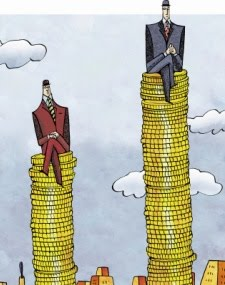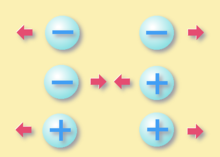 The Windows desktop is that software interface that has been originally created with the objective of generating a space of comfortable and easy access to the programs and operations available on a computer. It is a graphical interface in which numerous icons, accesses, folders, files, toolbars and programs can be arranged in different ways. All of them may have been previously selected and organized by the user according to their specific needs.
The Windows desktop is that software interface that has been originally created with the objective of generating a space of comfortable and easy access to the programs and operations available on a computer. It is a graphical interface in which numerous icons, accesses, folders, files, toolbars and programs can be arranged in different ways. All of them may have been previously selected and organized by the user according to their specific needs.
Over the years, Windows has developed numerous desktop styles that have evolved in complexity over time. The Windows desktop gives users the ability to rearrange windows via drag and drop. With it, the mouse or keyboard are used to move, rearrange and order the visible elements. If we take into account that the Windows desktop is the basis of any operation that we want to perform on the computer, we will understand its importance and at the same time the need for it to be a simple, accessible and efficient system that allows us to obtain the best results. We analyze in detail these aspects that we summarize.
Although nowadays they already speak a “language of their own”, the first graphical environments of computer operating systems sought to be a metaphor for what we find on an office table, on the desk. Hence, we talk about "computer desktop" (desktop), and that the one that has become the most famous is Windows.
It acts as the main point of user activity.
It is on the desktop that the application windows are displayed, with all their corresponding elements, and in which we can manage and order them, with operations such as minimizing, maximizing or resizing them.
In addition to containing the application windows, the desktop also contains other elements that help with the daily work with the operating system.
This is the case of the taskbar, an element that allows you to manage the windows open in the system, in addition to containing other items such as the Start button (from Windows 95), the clock, quick access icons, and icons. resident drivers and programs.
On the desktop we can also place icons, corresponding to shortcuts to programs, files, folders, or storage units, as well as files and folders themselves, that is, not direct accesses, but the content directly.
More modern are elements such as widgets, which are small applications that display content on the same desktop, so that we can have information without having to open the application.
The most visible and most customizable element on the desktop is the background wallpaper, the famous "desktop background", which we can change color and personalize with a photograph.
There are entire libraries dedicated to images of all kinds and that embrace all genres, and that we can use as a desktop background, even customizing it with an image made by ourselves, be it a photograph or a freehand drawing and then digitized.
This element, the background image, is the most conspicuous, visible and that denotes the most personalization of the desktop, although we can play with more elements in this aspect of personalization such as, for example, the play of colors of the windows and their elements, the typeface and font size.
Historically, the Windows desktop has been sourced from the classic Mac OS, which Microsoft "copied" to.
Although, in fact, the term "copy", in computing matters, is a diffuse concept, because one never knows where inspiration ends and hard copying begins.
From Windows 1.0 to 3.1 / 3.11, the desktop did not offer much functionality, something that changed with the arrival of Windows 95.
The difference is that until Windows 3.1 / 3.11, this was not an operating system, but a windows environment mounted on a 16-bit operating system, which was MS-DOS. Windows 95 became a full-fledged operating system, in addition to going 32-bit (although there was still 16-bit code in the initial versions).
The graphical environment made a qualitative leap between these two versions, gaining functionality for the desktop in Windows 95 and greater customization capabilities.
In Windows 98, Microsoft tried an interesting but unsuccessful concept: the active desktop.
This consisted of being able to include, in the desktop background (and regardless of the image or color that it looked like) one or more inserted web pages, so that they were updated.
Thus, we could configure news pages so that we could see the latest ones just when we entered the system.
Microsoft also tested, with better luck, the integration of its Internet Explorer web browser in the graphical interface of the operating system and, with it, its integration also on the desktop.
But what he had of technical success and good luck for the acceptance of the users, he lost in the courts.
All modern operating systems with a graphical interface for computers have, in one way or another, a desktop, regardless of its specific functionalities, way of working and appearance. Those that escape using this metaphor are its versions for mobile devices, including Windows 10 in its version for smartphones and tablets.
However, when we connect one of these mobile devices to an external monitor, if we have the Continuum functionality, the graphical interface becomes the same desktop as the desktop operating system.
Similarly, some Android devices also seek to transform their interface to a desktop metaphor. And it is that, for many years since Xerox invented it, Steve Jobs “stole” it (with the permission of the previous ones) for Apple, and Microsoft was “inspired” by it (or, for many, copied it), the metaphor of desk is still with us and with great vitality.









